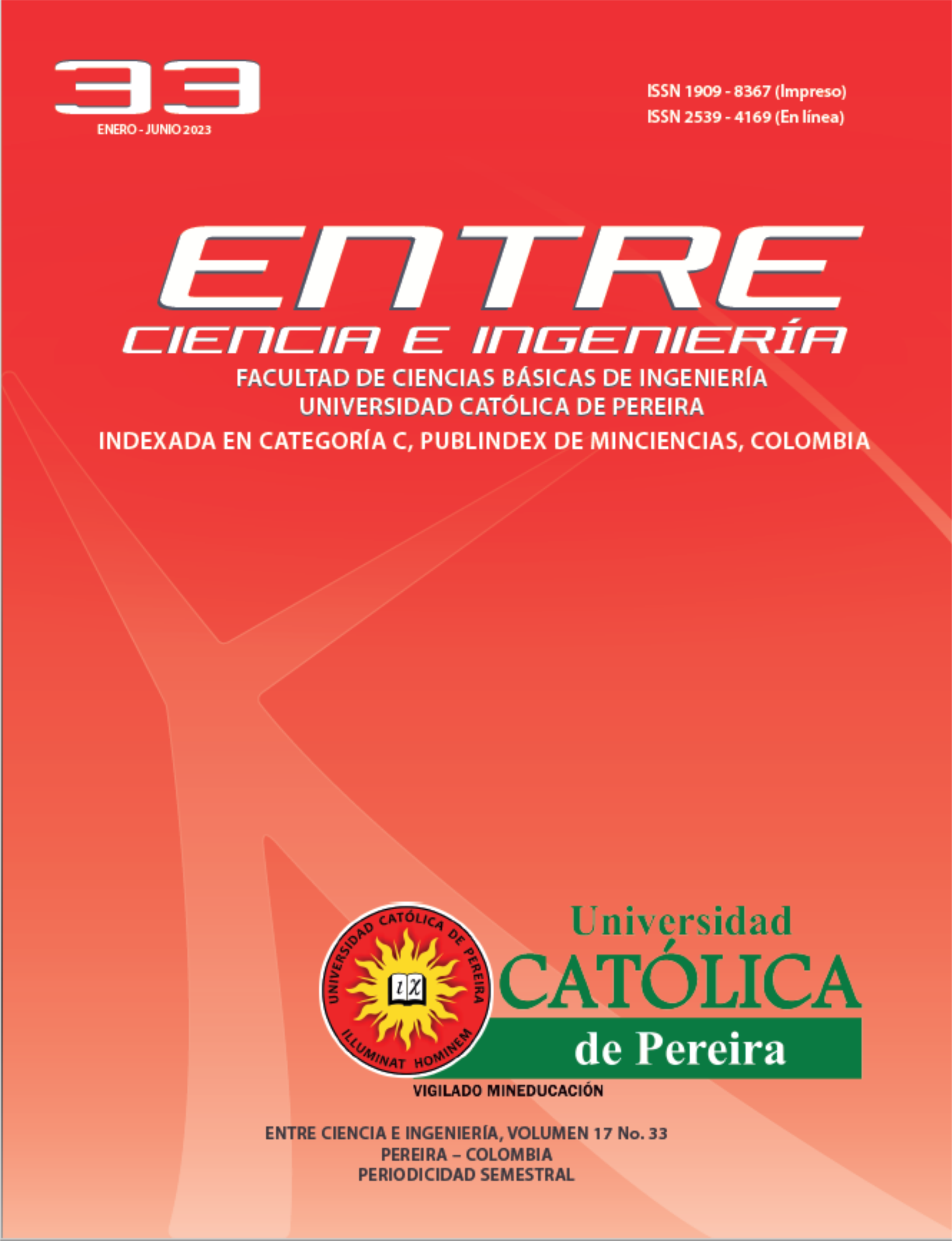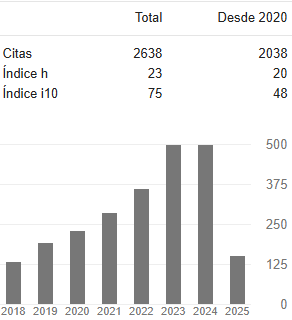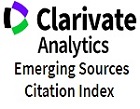Software para rehabilitación motriz basado en juegos
DOI:
https://doi.org/10.31908/19098367.2769Palabras clave:
Diseño centrado en el usuario, gamificación, rehabilitación de miembro superior,, videojuegosResumen
El siguiente artículo presenta un software basado en características de la gamificación para el mejoramiento de los procesos de rehabilitación motriz fina, considerando como punto clave la motivación de los pacientes. Partiendo de cinco patrones de movimiento de la mano, se desarrolló un software que permite la interacción entre el paciente y dos tipos de escenarios, uno basado en movimientos repetitivos y otro basado en videojuegos. Como interfaz natural para captar los movimientos de la mano del usuario se utiliza el dispositivo Leap Motion, mientras el software fue construido utilizando el motor de videojuegos Unity 3D. La herramienta fue probada con 32 usuarios y 1 paciente, obteniéndose resultados interesantes en cuanto al uso de interfaces naturales y el proceso de rehabilitación mediante juegos.
Descargas
Referencias
Karamians, R., Proffitt, R., Kline, D., Gauthier, L. “Effectiveness of virtual reality and gaming-based interventions for upper extremity rehabilitation poststroke: A meta-analysis”, Archives of Physical Medicine and Rehabilitation, vol. 101, no. 5, pp. 885-896, 2020.
Capó A., Gómez J., Moyà G., Perales F. “Motivational rehabilitation using serious games”, Virtual Archaeology Review, vol. 4, pp. 167–173, 2013.
Kairy D., Veras M., Archambault P., Hernandez A., Higgins J., Levin M., Poissant L., Raz A., Kaizer F. “Maximizing post-stroke upper limb rehabilitation using a novel telerehabilitation interactive virtual reality system in the patient’s home: study protocol of a randomized clinical trial”, Contemporary Clinical Trials, vol. 47, pp. 49–53, 2016.
Hao, J., Xie, H., Harp, K., Chen, Z., Siu, K. “Effects of virtual reality intervention on neural plasticity in stroke rehabilitation: A systematic review”, Archives of Physical Medicine and Rehabilitation, vol. 103, no. 3, pp. 523-541, 2022.
Mohr J. Stroke data Banks, Stroke, 17, 171–172, 1986.
Griffiths D., Sturm J. “Epidemiology and etiology of young stroke”, Stroke Research and Treatment, 2011, 2011:209370.
Cano de la Cuerda R., Molero A., Carratalá M., Alguacil I., Molina F., Miangolarra J., Torricelli D. “Teorías y modelos de control y aprendizaje motor. Aplicaciones clínicas en neurorehabilitación”. Neurología, vol. 30, no. 1, pp. 32–41, 2015.
Lohse K., Hilderman C., Cheung K., Tatla S., Van der Loos H. “Virtual reality therapy for adults poststroke: a systematic review and meta-analysis exploring virtual environments and commercial games in therapy”, Plos One, vol. 9, no.3, e93318, 2014.
Morales R., Badesa F., García N., Aranda J., Casals A. “Autoadaptive neurorehabilitation robotic system assessment with a post-stroke patient”. Revista Iberoamericana de Automática e Informática Industrial, vol. 12, no. 1, pp. 92-98, 2015.
Whitehead, S., Baalbergen, E. “Post-stroke rehabilitation”, South African Medical Journal, vol. 109, no. 2, 2019.
Ramírez, G., Téllez, B. “Epidemiología de la enfermedad vascular cerebral en México: Ausencia de registro de las secuelas cognitivas”, Revista Mexicana de Neurociencia, vol. 17, no. 2, pp. 59-70, 2016.
Silva, M., Sandoval, D., Durán, J. “Caracterización de pacientes con enfermedad cerebrovascular isquémica aguda”, Repertorio de Medicina y Cirugía, vol. 29, no. 3, 2020.
Nijenhuis S., Prange G., Amirabdollahian F., Sale P., Infarinato F., Nasr N., Mountain G., Hermens H., Stienen A, Buurke J., Johan R. “Feasibility study into self-administered training at home using an arm and hand device with motivational gaming environment in chronic stroke”, Journal of Neuroengineering and Rehabilitation, vol. 12, no. 89, 2015.
Kim D., Park J. “Virtual reality for stroke rehabilitation”. Cochrane Database Syst Rev, vol. 11, 2017.
Arunkumar J., Hur P., Motawar B., Seo N. “Low-cost virtual reality game for upper limb rehabilitation using Kinect and p5 glove”, 37th Annual Meeting of the American Society of Biomechanics, Omaha, Nebraska, United States, september 2013.
Colder, M., Van Rooij, A., Spruijt, D., Kvedar, J., Griffiths, M., Carabas, Y., Labrique, A. “Commercial video games as therapy: A new research agenda to unlock the potential of a global pastime”, Front. Psychiatry, 2018.
Velarde M. P., Perugachi E., Romero D., Sappa A., Vintimilla B. “Análisis del movimiento de las extremidades superiores aplicado a la rehabilitación física de una persona usando técnicas de visión artificial”. Revista Tecnológicas Espol vol. 28, no. 1, pp. 1–7, 2015.
Hernández M., López M., Pimentel J., Toledo G. “Videojuego didáctico empleando el Kinect para la manipulación virtual de un aerogenerador”. Pistas Educativas, vol. 36, no. 112, pp. 483-503, 2018.
Guevara, B., Martínez, A., Gordón, A., Constante, P. “Sistema inmersivo de reconocimiento y control de gestos empleando realidad virtual para rehabilitación de las extremidades superiores en pacientes con daño cerebral adquirido (DCA)”. Revista Ibérica de Sistemas e Tecnologias de Informação, no. E19, pp. 658-670, 2019.
Sánchez, C. “Gamificación en la educación: Hacia una pedagogía para involucrar y motivar a los estudiantes”, Madrid, EAE, 2020.
Aparicio, A., Gutierrez, F., González, J., Isla, J. “Analysis and application of gamification”. 13th International Conference Interacción Persona-Ordenador, Elche, España, octubre 2012.
Toh, W., Kirschner, D. “Self-directed learning in video games, affordances and pedagogical implications for teaching and learning”, Computers & Education, vol. 154, 2020.
Paraskevopoulos I., Tsekleves E., Craig C., Whyatt C., Cosmas J. “Design guidelines for developing customised serious games for Parkinson’s Disease rehabilitation using bespoke game sensors”, Entertainment Computing, vol. 5, no. 4, pp. 413-424, 2014.
Calderita L., Bustos P., Suárez C., Viciana R., Bandera A. “Asistente robótico socialmente interactivo para terapias de rehabilitación motriz con pacientes de pediatría”, Revista Iberoamericana de Automática e Informática Industrial, vol. 12, no. 1, pp. 99–110, 2015.
Yoo C., Yong M., Chung J., Yang Y. Effect of computerized cognitive rehabilitation program on cognitive function and activities of living in stroke patients, Journal of Physical Therapy Science, 27, 2487–2489, 2015.
Fazeli, H., Venkatesh, S., Peng, Q. “A virtual environment for hand motion analysis”, Procedia CIRP, vol. 78, pp. 127-132, 2018.
Aguilera, A., Alguacil, I., Mallo, A., Cuesta, A. “Use of the Leap Motion Controller® System in the rehabilitation of the upper limb in stroke. A systematic review”, Journal of Stroke and Cerebrovascular Diseases, vol. 31, no. 1, 2022.
Gamboa E., Serrato A., Toro D., Trujillo M. “Advantages and limitations of leap motion for developing physical rehabilitation exergames (PREGs). 5th Workshop on ICTs for improving Patients Rehabilitation Research Techniques, Popayán, Colombia, septiembre 2019.
García, A., Goosses, M., Konrad, R., Stork, M., Becker, H., Göbel, S., Kalbe, E. “PDPuzzleTable: A Leap Motion exergame for dual-tasking rehabilitation in Parkinson’s Disease. Design and study protocol”. International Conference on Entertainment Computing, Arequipa, Perú, noviembre 2019.
Li J., Hsieh Y., Lin F., Chu C. “Hand gesture recognition for post-stroke rehabilitation using Leap Motion”. International Conference on Applied System Innovation, Sapporo, Japan, mayo 2017.
Alimanova M., Borambayeva S., Kozhamzharova D., Kurmangaiyeva N., Ospanova D., Tyulepberdinova G., Kassenkhan, A. “Gamification of hand rehabilitation process using virtual reality tools: Using Leap Motion for hand rehabilitation”. First IEEE International Conference on Robotic Computing, Taichung, Taiwan, april 2017.
Aguilar, C., Rechy, E. “Performance analysis of Leap motion controller for finger rehabilitation using serious games in two lighting environments”, Measurement, vol. 157, 2020.
Nielsen J. “10 usability heuristics for user interface design”, Nielsen Norman Group, updated 2020.
Cronholm S. “The usability of usability guidelines: a proposal for meta-guidelines”, 21st Annual Conference of the Australian Computer-Human Interaction Special Interest Group: Design: Open 24/7, Melbourne, Australia, november 2009.
Descargas
Publicado
Número
Sección
Licencia
Derechos de autor 2023 Entre Ciencia e Ingeniería

Esta obra está bajo una licencia internacional Creative Commons Atribución-NoComercial 4.0.



















